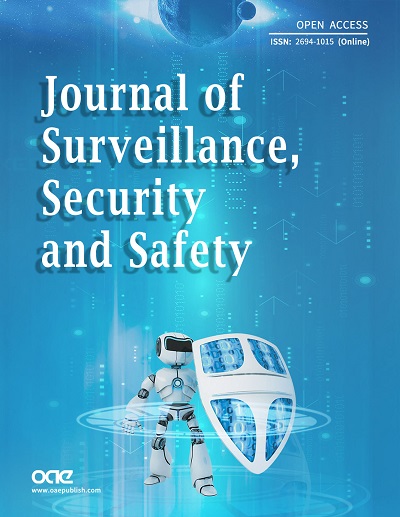REFERENCES
1. Thomas DR, Beresford AR. Better authentication: password revolution by evolution. In: Christianson B, Malcolm J, Matyáš V, Švenda P, Stajano F, Anderson J, editors. Security Protocols XXⅡ. Springer International Publishing; 2014. pp. 130-45.
2. Houshmand S, Aggarwal S. Building better passwords using probabilistic techniques. In: Proceedings of the 28th Annual Computer Security Applications Conference; New York, USA. ACM Press; 2012. pp. 109-18.
3. Federal Office for Information Security. Handling passwords securely: a step-by-step guide. Available from: https://www.bsi.bund.de/EN/Themen/Verbraucherinnen-und-Verbraucher/Informationen-und-Empfehlungen/Cyber-Sicherheitsempfehlungen/Accountschutz/Sichere-Passwoerter-erstellen/Umgang-mit-Passwoertern/umgang-mit-passwoertern_node.html. [Last accessed on 8 Dec 2023].
4. Bartsch W, Hüebner M. Reference architecture for secure cloud based remote automation - Zero-knowledge initial enrolment of resource-constrained IoT with symbiotic security. atp Magazin 2019;61:72-82.
5. Bartsch W, Gope P, Kavun EB, et al. Design rationale for symbiotically secure key management systems in IoT and beyond. In: Proceedings of the 9th International Conference on Information Systems Security and Privacy - ICISSP. SciTePress; 2023. pp. 583-91.
6. FIDO Alliance. Certified authenticator levels. Available from: https://fidoalliance.org/certification/authenticator-certification-levels/. [Last accessed on 8 Dec 2023].
7. FIDO Alliance. FIDO UAF protocol specification: FIDO alliance review draft 28 November 2017. Available from: https://fidoalliance.org/specs/fido-uaf-v1.2-rd-20171128/fido-uaf-protocol-v1.2-rd-20171128.html. [Last accessed on 8 Dec 2023].
8. FIDO Alliance. FIDO security reference: FIDO alliance review draft 27 September 2017. Available from: https://fidoalliance.org/specs/fido-v2.0-rd-20170927/fido-security-ref-v2.0-rd-20170927.html. [Last accessed on 8 Dec 2023].
9. FIDO Alliance. FIDO TechNotes: the truth about attestation. Available from: https://fidoalliance.org/fido-technotes-the-truth-about-attestation/. [Last accessed on 8 Dec 2023].
10. Skorobogatov SP. Copy protection in modern microcontrollers. Available from: https://www.cl.cam.ac.uk/~sps32/mcu_lock.html. [Last accessed on 8 Dec 2023].
11. Brickell E, Camenisch J, Chen L. Direct anonymous attestation. In: Proceedings of the 11th ACM Conference on Computer and Communications Security. ACM; 2004. pp. 132-45.
12. Whitefield J, Chen L, Sasse R, Schneider S, Treharne H, Wesemeyer S. A symbolic analysis of ECC-based direct anonymous attestation. In: 2019 IEEE European Symposium on Security and Privacy (Euro S&P); 2019 Jun 17-19; Stockholm, Sweden. IEEE; 2019. pp. 127-41.
13. FIDO Alliance. FIDO ECDAA Algorithm. Available from: https://fidoalliance.org/specs/fido-v2.0-id-20180227/fido-ecdaa-algorithm-v2.0-id-20180227.html#dfn-ecdaa-issuer. [Last accessed on 8 Dec 2023].
14. Bleichenbacher D. Chosen ciphertext attacks against protocols based on the RSA encryption standard PKCS #1. In: Annual International Cryptology Conference (CRYPTO); 1998. pp. 1-12.
15. Pornin T. RFC 6979: Deterministic usage of the digital signature algorithm (DSA) and elliptic curve digital signature algorithm (ECDSA).
16. Arciszewski S. No Way, JOSE! Javascript object signing and encryption is a bad standard that everyone should avoid. Available from: https://paragonie.com/blog/2017/03/jwt-json-web-tokens-is-bad-standard-that-everyone-should-avoid. [Last accessed on 8 Dec 2023].
17. Panos C, Malliaros S, Ntantogian C, Panou A, Xenakis C. A security evaluation of FIDO's UAF protocol in mobile and embedded devices. In: International Tyrrhenian Workshop on Digital Communication: Digital Communication. Towards a Smart and Secure Future Internet; 2017. pp. 127-42. Available from: https://link.springer.com/chapter/10.1007/978-3-319-67639-5_11#citeas. [Last accessed on 8 Dec 2023].
18. W3C. Web authentication: an API for accessing public key credentials Level 1. Available from: https://www.w3.org/TR/webauthn-1/. [Last accessed on 8 Dec 2023].
19. Bartsch W, Huebner M. Efficient system design of scalable ultra low power architectures with symbiotic security. IEEE VLSI Circuits Syst Lett 2019;5:4-11. Available from: https://ieeecs-media.computer.org/media/technical-activities/tcvlsi/newsletters/2019/ieee_vcal_vol_5_issue_4_nov_2019.pdf. [Last accessed on 8 Dec 2023].
20. Cooper G, Behm B, Chakraborty A, Kommalapati H, Mandyam G, Tschofenig H. FIDO device onboard specification. Available from: https://fidoalliance.org/specs/FDO/FIDO-Device-Onboard-RD-v1.0-20201202.html. [Last accessed on 8 Dec 2023].
21. German Federal Office for Information Security. Report on Microsoft Windows 8 and TPM. Available from: https://web.archive.org/web/20160304004000/https://www.bsi.bund.de/DE/Presse/Pressemitteilungen/Presse2013/Windows_TPM_Pl_21082013.html. [Last accessed on 8 Dec 2023].
22. Gassend B, Clarke D, van Dijk M, Devadas S. Silicon physical random functions. In: Proceedings of the 9th ACM Conference on Computer and Communications Security; New York, USA. 2002. pp. 148-60.
23. Ángel Prada-Delgado M, Baturone I, Dittmann G, Jelitto J, Kind A. PUF-derived IoT identities in a zero-knowledge protocol for blockchain. Internet Things 2020;9:100057.
24. Román R, Baturone I. A quantum-resistant and fast secure boot for IoT devices using hash-based signatures and SRAM PUFs. In: Nayyar A, Paul A, Tanwar S, editors. The Fifth International Conference on Safety and Security with IoT. Cham: Springer International Publishing; 2023. pp. 121-36.
25. Gu C, Chang CH, Liu W, Hanley N, Miskelly J, O'Neill M. A large scale comprehensive evaluation of single-slice ring oscillator and PicoPUF bit cells on 28nm xilinx FPGAs. In: Proceedings of the 3rd ACM Workshop on Attacks and Solutions in Hardware Security Workshop; New York, USA. 2019. pp. 101-6.
26. Tsiokanos I, Miskelly J, Gu C, O'neill M, Karakonstantis G. DTA-PUF: dynamic timing-aware physical unclonable function for resource-constrained devices. J Emerg Technol Comput Syst 2021;17:1-24.
27. Sakib S, Rahman MT, Milenković A, Ray B. Flash memory based physical unclonable function. In: 2019 SoutheastCon; 2019 Apr 11-14; Huntsville, USA. IEEE; 2019. p. 1-6.
28. Holcomb DE, Burleson WP, Fu K. Power-up SRAM state as an identifying fingerprint and source of true random numbers. IEEE Trans Comput 2009;58:1198-210.
29. Armknecht F, Moriyama D, Sadeghi AR, Yung M. Towards a unified security model for physically unclonable functions. Available from: https://ia.cr/2016/033. [Last accessed on 8 Dec 2023].
30. Panchenko A. On the impact of cross-layer information leakage on anonymity in crowds. In: Proceedings of the 11th ACM Symposium on QoS and Security for Wireless and Mobile Networks; New York, USA. Association for Computing Machinery; 2015. pp. 35-42.
31. Pennekamp J, Henze M, Hohlfeld O, Panchenko A. Hi doppelgäNger: towards detecting manipulation in news comments. In: Companion Proceedings of The 2019 World Wide Web Conference; New York, USA. Association for Computing Machinery; 2019. pp. 197-205.
32. Pasikhani AM, Clark AJ, Gope P. Adversarial RL-based IDS for evolving data environment in 6LoWPAN. IEEE TIFS 2022;17:3831-46.
33. Najafi F, Kaveh M, Martín D, Reza Mosavi M. Deep PUF: a highly reliable DRAM PUF-based authentication for IoT networks using deep convolutional neural networks. Sensors 2021;21:2009.
34. Millwood O, Miskelly J, Yang B, Gope P, Kavun EB, Lin C. PUF-phenotype: a robust and noise-resilient approach to aid group-based authentication with DRAM-PUFs using machine learning. IEEE T Inf Foren Sec 2023;18:2451-65.
35. Bartsch W, Wuelbeck J. pbTLS Documentation. Available from: https://documentation.pointblank.de/. [Last accessed on 8 Dec 2023].






